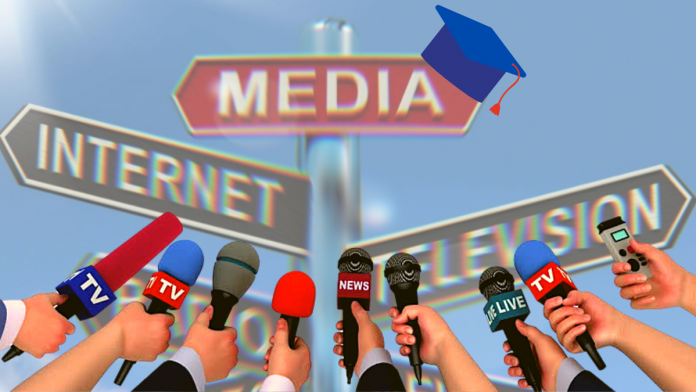This article is written by Bhavyika Jain, from Symbiosis Law School, NOIDA. This article deals with the celebrity trials that take place in India and all the issues related to privacy, defamation, and media trials and the basic procedure that is required.
Table of Contents
Introduction
Media is considered as the fourth pillar of society, the other three being executive, legislature, and the judiciary. In the present era, the media has become increasingly significant in various aspects of our economy, especially in terms of mobilising public opinion. Newspapers, T.V., Internet, etc. are some sources to keep us in touch with the media.
Therefore, in the current time, it is almost impossible to imagine a life without the role played by the media. It has become an integral part of our life without which our lives would be incomplete. It is necessary to regulate the affairs of the media through effective laws.
Who is a celebrity
In 2012, the Delhi High Court defined a celebrity in Titan Industries Ltd. vs. Ramkumar Jewellers (2012) as “a famous or a well-known person and is merely a person to whom many people talk about or know about” and further went on to say that “the right to control the commercial use of human identity is the right to publicity”.
Need to protect celebrity rights
Celebrity rights are generally assignable and licensable commercially. In today’s world, public relations costs a lot of money, and a celebrity’s public image is extremely valuable. Recognizing this valuable item as property means that it will be taxed as a capital asset, similar to any other intellectual property. This generates an economic incentive for the general public, and superstars are sufficiently compensated due to their moral claim to money derived from their celebrity.
The right to publicity can be passed down through the generations. As a result, a celebrity’s descendants can benefit from the celebrity’s notoriety during his or her lifetime.
There is also a need to protect the performers by removing their sense of insecurity caused by the threat of technological unemployment. to prevent bootlegging and control the exploitation of performers who are unable to handle their own situations.
Privacy in India
The Information Technology Act (ITA) 2000 currently contains India’s most comprehensive legal provisions concerning internet privacy. The ITA incorporates a list of regulations that can safeguard online privacy in some circumstances while still diluting it in others. The ITA, for example, does not address issues such as the legal status of social media content in India, data merging and sharing across databases, whether individuals can transmit images of their own “private parts” across the internet, whether users have the right to be notified of the presence of cookies and do-not-track options, and the use of electronic personal identifiers. Furthermore, the ITA’s legislative gaps lead to eroding online users’ privacy.
People tend to personalise celebrities as their friends and become curious about every personal aspect of their lives, ranging from their personal affairs to something as trivial as the clothes they wear, the cosmetics they use, and the places they visit because celebrities have a popular image in society. However, because celebrities are unfamiliar with the general audience, there is no natural interchange of information. As a result, superstars try to keep their personal information under wraps because disclosing it could result in embarrassment, shame, and a sense of insecurity.
Protection of celebrities under the Right to Privacy
The Right to Privacy is enshrined under Article 21 of the Indian Constitution as a fundamental right. Article 19 of the Constitution guarantees freedom of the press. In addition, the right to obtain and distribute information is included in the definition of ‘freedom of speech and expression’ in Article 19 (1) (a). A broad dimension is given by the Supreme Court in the case of the State of Uttar Pradesh vs. Raj Narain (1975) that freedom of speech and expression includes the capability to receive and transmit information and ideas without interference.
Four distinct rights are included under the purview of the Right to Privacy:
- The right to prevent public exposure.
- The Right to Privacy and the prohibition of any sort of intrusion into a person’s personal matters.
- Avoid erroneous publicity
- Prevent the use of a person’s name and likeness without permission.
For the first time, the personality rights in the form of the right to privacy were recognized by the Supreme Court in the landmark judgment of R. Rajagopal vs. State of Tamil Nadu (1994). The Indian Supreme Court determined that a magazine would publish an autobiography written by a prisoner without his knowledge or licence. Officials at the jail sought to prevent the autobiography from being published by compelling the prisoner to request that it not be published. Someone tries to pry into a person’s private life, he or she is met with a barrage of defences. While still, celebrities rely on publicity, they have a right to privacy in both their personal and professional lives.
Media trials vs. Judiciary
There has never been a legal system that allows the media to try a case. Every coin has two sides, and the same is true of media trials and journalism. In some cases, journalists portray a predetermined image of an accused, shredding his or her reputation and potentially affecting the trial and judgment. The importance of media trials has grown in India. Several instances have occurred in which the media has taken the case into its own hands and rendered a verdict against an accused in violation of fair trials in court. Any individual’s thought process can be influenced by the media.
For example, in times like this, when COVID-19 has become a global pandemic, the media and news channels broadcast how many people have died and the number of new cases every morning, which automatically installs fear in the public’s mind, whereas showing the number of recoveries may motivate the public and aid in the fight against the pandemic. People’s perceptions are shaped by the media, which can have both positive and harmful consequences.
Cases regarding media trials
The case of Dr. Rajesh Talwar and another vs Central Bureau of Investigation, 2013 drew a lot of attention from the media and was in the news for a long time. In May of 2008, Arushi and her domestic helper Hemraj were assassinated. Initially, the suspect list had a large number of names. Many saw the spectacular media coverage as a media trial, with scandalous claims levelled against Aarushi and other accused. The media questioned Arushi’s character as well as her relationship with Hemraj, despite the fact that no reliable evidence had been produced. In November of 2013, the parents were found guilty of the murder and sentenced to life in prison. Many critics contended that the case was founded on flimsy evidence, that the evidence was insufficient to fully condemn the parents for the murder, that there were other suspects, and that the media trial intervention caused doubts in the public’s minds. The Talwars appealed the ruling to the Allahabad High Court, which acquitted them in 2017 after giving them the benefit of the doubt and deeming the evidence inadequate.
In the Sushant Singh Rajput death case, the Bombay High Court stated that the media should avoid reporting on a continuing inquiry and current facts that are in the public interest rather than what the media believes the public is interested in. The judgement established a list of reports that are likely to create prejudice to an ongoing investigation, but it is not exhaustive.
The following are some examples:
- In the case of a suicide, presenting the deceased as a weak character or infringing in any way on the deceased’s privacy are prohibited.
- Engaging in character assassination and so tarnishing a person’s reputation that prejudices a current inquiry by:
- Making disparaging remarks about the accused’s character and creating a hostile environment for both;
- Conducting interviews with the victim, witnesses, and/or members of their families;
- Examining the versions of witnesses whose testimony may be crucial at trial;
- Without letting the public know the nitty-gritty of the Evidence Act,1872; publishing a confession allegedly made to a police officer by an accused and attempting to persuade the public that the same is a piece of evidence that is admissible before a court and that there is no reason for the court not to act on it;
- Printing images of an accused person in order to make his identification easier;
- Deciding on the merits of a case, including determining the guilt or innocence of an accused or a person who is not yet wanted in a case, as the case may be;
- Forecasting future actions, such as measures that should be taken in a specific direction to finish the inquiry, and
- Leaking sensitive and confidential data from the investigative agency’s materials.
3. Operating in any way that contravenes the terms of the Programme Code as set forth in Section 5 of the Cable TV Network Act and Rule 6 of the Cable TV Network Rules, consequently attracting contempt of court.
4. Engaging in character assassination and so tarnishing a person’s reputation.
The bench stated that while these guidelines are not exhaustive, they are indicative, and that any report published in print or electronic media must comply with the Programme Code, journalistic standards, and the Code of Ethics and Broadcasting Regulations; otherwise, action under the existing regulatory mechanism may be taken.
Defamation
In law, defamation is the act of assaulting another’s reputation by false publication (communication to a third party) with the intent of bringing that person into disgrace. The notion is enigmatic, with only human creativity limiting its variations. A defamatory statement is one that is intended to cause hatred, contempt, or ridicule toward a person, or to harm him in his trade, business, profession, calling, or office, or to cause him to be shunned or avoided in society. In order to bring a defamation suit, the plaintiff must have suffered some harm to his reputation. Defamation, defined under Section 499 of the Indian Penal Code, can be committed either by the way of writing or by the way of speech. The term ‘libel’ is used for the former kind of utterances and ‘slander’ for the latter. Slander is spoken defamation and libel is written defamation.
The murder of Sushant Singh Rajput is one of the most recent cases in which the media has taken the lead in shaping people’s perceptions and establishing facts and secrets even before the CBI or police discover them in India. It was observed by Justice D.Y.Chandrachud in Romila Thapar & Ors. v. UOI (2018) that the way in which the police misuse the media makes an impact on the reputation of the people that are part of the case. He also stated that “the use of electronic media by the investigating arm of the state to influence public opinion during the pendency of an investigation subverts the fairness of the investigation. The police are not adjudicators nor do they pronounce upon guilt”.
People may use the media to malign someone, resulting in the person’s and his entire life being destroyed. or even persons without a job or an aim can become renowned. In the #MeToo movement, several people in the industry were charged and labeled as rapists. Not all accusations are true, and not all accusations are false. However, it is our responsibility as members of a society to understand and verify which information is correct and which is not.
Newspaper libel
Newspapers are subject to the same regulations as other critics, and they have no unique rights or privileges. Despite the leeway given to them, they have no special right to make unjustified remarks or to make imputations about or in regard to a person’s profession or calling. A journalist’s criticism or comment is limited to the same scope as that of any other citizen.
In Mitha Rustomji v Nusserwanji Engineer (1941) it was held that even if newspapers have a duty to their readers to publish any and all news that may be of interest to them, it has been determined that this is not such an obligation that every communication in the paper relating to a matter of public interest is privileged. In this case, the defendant published in a newspaper about a lady, who was an instructress in physical culture and dancing and who also ran an industrial institution for Parsi girls, that she was unfit to carry on her profession and that by carrying it on, she would be in a position to ruin the future of the girls taking their training in her classes. It was held to be a gross libel.
In another case of Rustom K Karanjia v Thackersey (1969) it was held that a journalist like any other citizen has the right to comment fairly, provided the allegation of facts that he has made are accurate and truthful, however, defamatory otherwise. Since his right to comment on matters of public interest is recognized by law, the journalist owes an obligation to the public to have his facts right.
Raj Kundra’s case
This is the most recent case in which a media trial is highlighted. In this case, the businessman Raj Kundra has been arrested on the charge of being involved in the making of an adult film. Recently, some people were arrested on the charge of forcing a woman into porn movies. A promise was made to these women who came to Mumbai to aspire to their careers. It is alleged that they have changed their scripts on the day of the shoot and have threatened them to perform the acts.
As soon as the shoots were done these movies were made available on the mobile apps, offering subscriptions on the lines of mainstream OTT platforms, and later advertisements were put up on the social media platforms. Since pornography is illegal in India, this was too against the law.
These allegations are not yet proved and no strong evidence has been collected against the accused, the investigation is still on in this case, but the media has made the case more sensational and are making their allegations based on some facts which may be true or false.
Conclusion
Media has evolved and altered over time, from the Bengal Gazette to digitalized forms. In contrast to the United States, India does not have a distinct provision protecting press freedom. The media should not be hampered by political constraints or influences in order to operate freely. It should also not have to make editorial judgments based on ratings, audience, or sponsors in an ideal world.
Conducting debates or conversations on ongoing cases is pointless because most of these disputes are fatal in the absence of evidence and a true legal trial. Nowadays, there is an abundance of information available. As a result, there is an inbuilt pressure to perform and stay active on television and other media at all times. Given how competitive the media landscape already is, how can we reasonably regulate media without undermining its democratic purpose? And who should be in charge of enforcing these limitations?
Without a doubt, the media should be allowed to publish news. Even so, when it comes to interfering with the legal system, the judiciary has the potential to facilitate a fair set of rules. These restrictions should not jeopardise the quality of reporting, but they should set important boundaries for sensitive instances in India to avoid media trials.
References
- https://www.lawctopus.com/academike/media-trials-in-india-history/
- https://www.legalserviceindia.com/legal/article-4292-trial-by-media-a-threat-to-our-judicial-system-.html
- https://www.researchgate.net/publication/347738486_Trial_by_media_in_celebrity_drug_cases_in_India_Just_Some_Bad_News
- https://www.mondaq.com/india/trademark/777368/celebrity-rights-is-it-important-in-india
- https://www.ipandlegalfilings.com/celebrity-rights-is-it-important-in-india/?utm_source=Mondaq&utm_medium=syndication&utm_campaign=LinkedIn-integration
- https://www.mondaq.com/india/privacy-protection/801764/protection-of-celebrity-rights-personality-rights-in-india?
- https://blog.ipleaders.in/famous-cases-media-trials-india/
Students of Lawsikho courses regularly produce writing assignments and work on practical exercises as a part of their coursework and develop themselves in real-life practical skills.
LawSikho has created a telegram group for exchanging legal knowledge, referrals, and various opportunities. You can click on this link and join:
https://t.me/joinchat/J_0YrBa4IBSHdpuTfQO_sA
Follow us on Instagram and subscribe to our YouTube channel for more amazing legal content.
 Serato DJ Crack 2025Serato DJ PRO Crack
Serato DJ Crack 2025Serato DJ PRO Crack











 Allow notifications
Allow notifications



